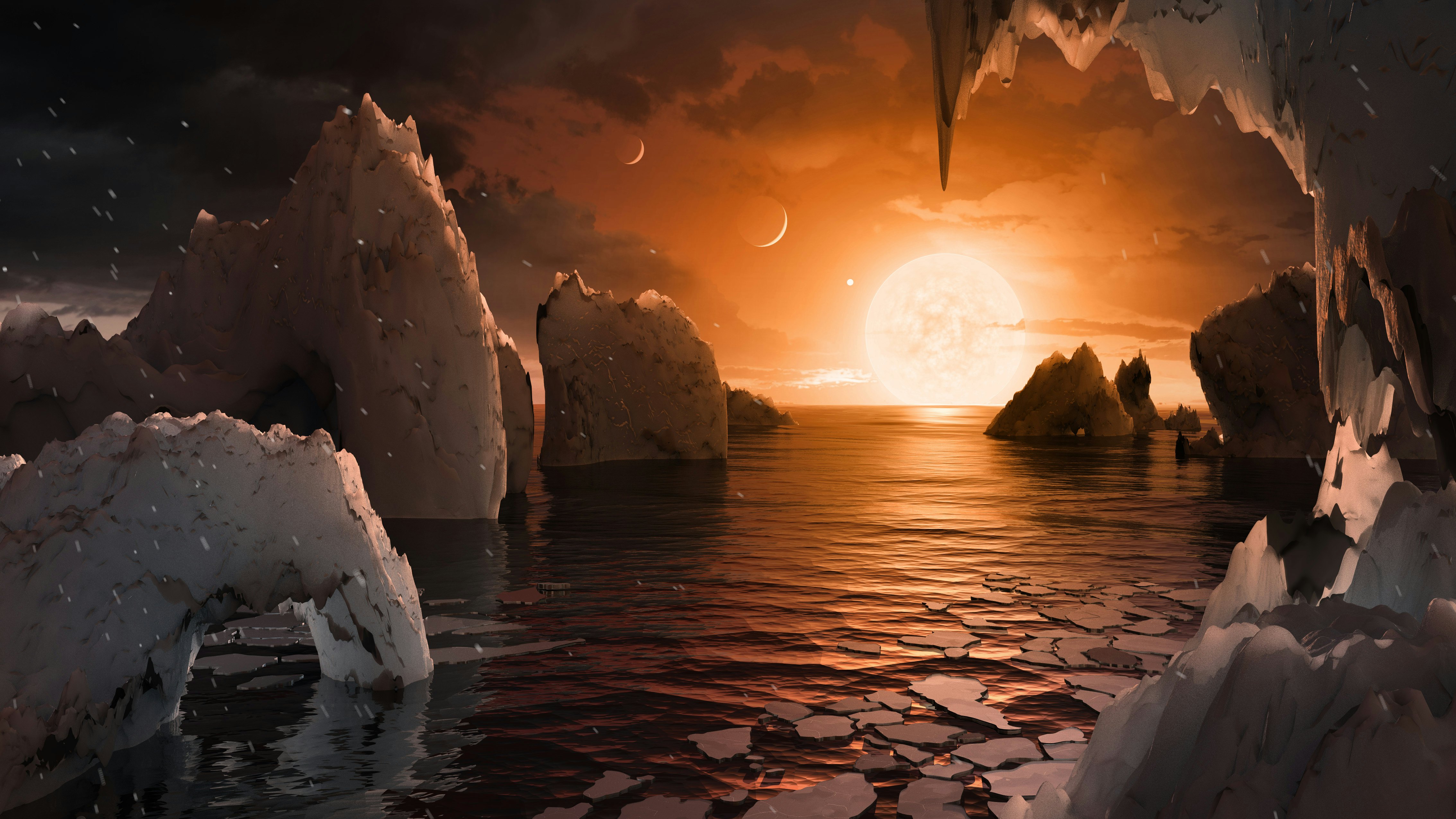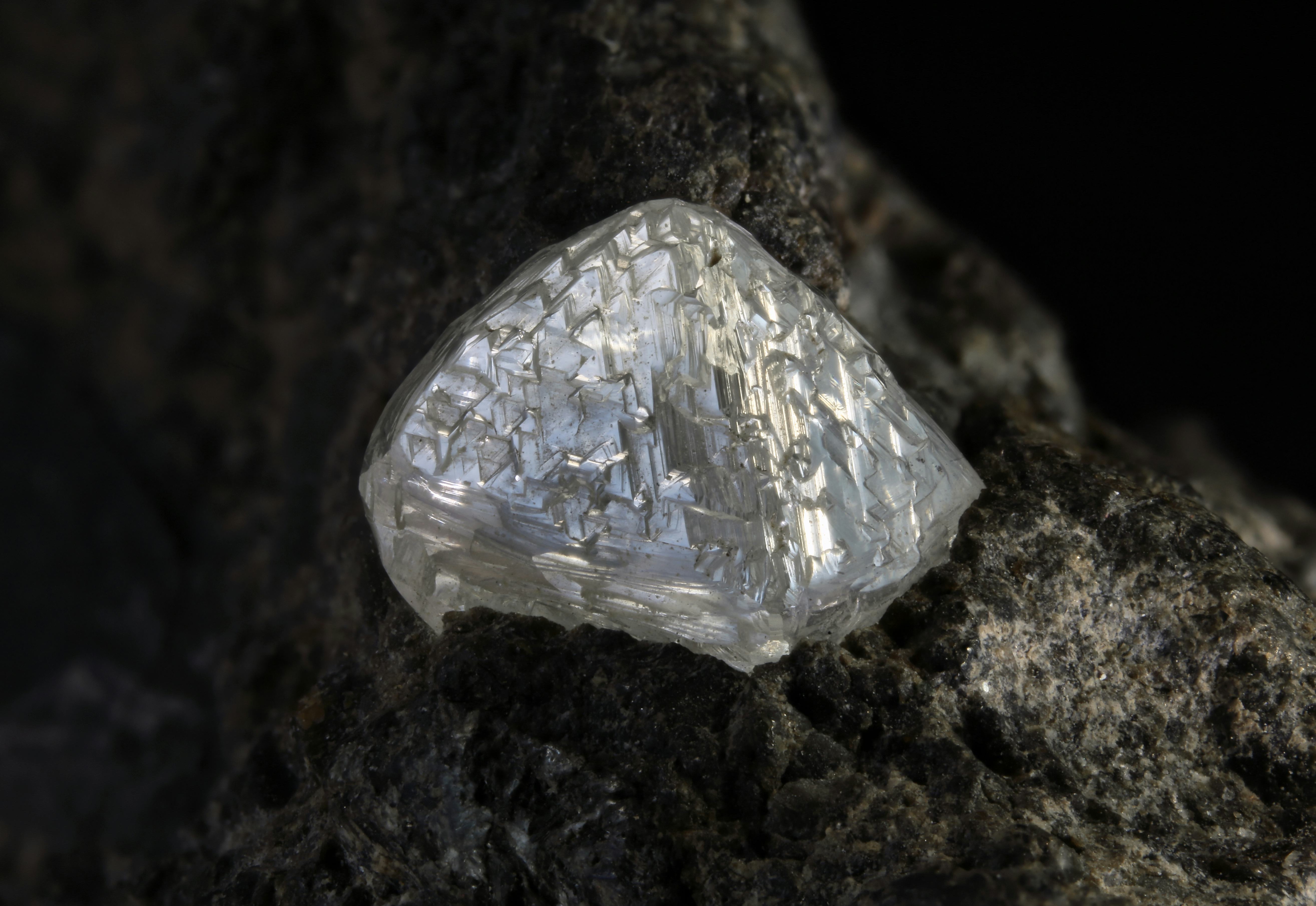
Ice could deliver electrolytes to alien oceans, and that’s good news for astrobiologists.
You need more than water to make a habitable ocean; you also need nutrients, including electrolytes. (Electrolytes are chemicals, like salts, which can split into ions.) Here on Earth, the emergence of life in the oceans depended on nutrients from our planet’s rocky crust and mantle mixing with liquid water. But on an exoplanet whose surface is mostly water — which is what some models suggest worlds like TRAPPIST-1e might be like — that may be a problem.
The weight of an ocean several kilometers deep would compress its bottom layers into a seafloor of very dense ice — which might cut the alien ocean off from the supply of nutrients it would need to be habitable. If a thick layer of super-dense ice separates the ocean from the planet’s rocky center, could electrolytes and other key nutrients still find their way into the ocean to create the right conditions for life?
A recent study, published Tuesday in the journal Nature Communications, says that instead of keeping key minerals out of reach, a mantle of high-pressure ice could actually deliver at least some simple electrolytes to an alien ocean.
What’s New — Planetary scientist Jean-Alexis Hernandez of the European Synchrotron Radiation Facility and his colleagues recently used computer simulations to model the chemistry and geology of ice on an Earth-sized ocean world. It turns out that high-pressure ices like ice VII can hold simple salts, like sodium chloride (better known as table salt) in their crystal structures, and those salty ices can very slowly convect, carrying electrolytes from the planet’s rocky core to the liquid ocean above.
Water can form different kinds of ice crystals depending on the temperature and pressure, which determine how the molecules physically arrange themselves. The familiar stuff in your freezer is hexagonal ice, but the ice at the bottom of the ocean on a world like Kepler-62e or TRAPPIST-1e (if they have oceans) is probably a type of ice called ice VII, which forms under very high pressures, has cubic crystals instead of hexagonal ones, and is much denser than ordinary ice – dense enough to sink instead of float in water.
That’s why some planetary scientists have argued that icy mantles on ocean exoplanets might actually block the kind of geochemical cycle that helped jumpstart life here on Earth.
Hernandez and his colleagues’ computer model showed that ice VII with sodium chloride built into its crystal structure can flow — albeit very slowly.

“This convection occurs in the same way as glaciers flow,” Hernandez explains in a statement. “But the flow is driven by the temperature difference between the bottom and the top of the mantle.”
Picture a pan of water boiling on a stove; the material at the bottom is hotter (and therefore less dense), so it rises to the surface. At the surface, the material cools and sinks again. Now picture that process happening on a very slow, geologic time scale, with solid ice. Cool, right?
“The upwelling material melts when it reaches the ocean, therefore releasing salts there,” wrote Hernandez and his colleagues in their recent paper.
And that could be the first ingredient in a livable alien ocean.
Here’s the Background — The whole geochemical cycle on a probable-ocean world like TRAPPIST-1e or Gliese 1214b depends on a really cool property of ice VII: unlike ordinary ice, ice VII can build simple salts into its crystal lattice. Sodium and chlorine ions just take the place of some of the water molecules as the cubic crystals form.
We know ice VII can do this because a few years ago, geochemists found some icy impurities in a diamond formed deep in Earth’s mantle. The ice in the diamond was Ice VII, and it had salt molecules embedded in its cubic crystals.
Substituting sodium and chlorine for water molecules in ice VII’s latticework distorts the resulting ice crystals a bit – stretching them in some places and shrinking them in others. That makes salty ice VII denser than pure ice VII, so Hernandez and his colleagues weren’t sure whether salty ice VII could still flow well enough for convection to carry electrolytes through an exoplanet’s icy mantle to its ocean.
“We determined that the density difference between pure and salty ice was not enough to outweigh the thermal convection,” said Hernandez.
Why It Matters — Ocean worlds, with a mass somewhere between Earth’s and Neptune’s, are probably pretty common in the universe; it’s just an unfortunate coincidence that our Solar System formed without one. Instead, we have smaller-scale versions in icy moons like Europa and Ganymede, where there’s not high enough pressure to create dense high-pressure ices like ice VII.
“The largest amount of liquid water in our universe by volume might be found in the gigantic oceans of water-rich exoplanets and icy moons,” wrote Journaux in his comments on Hernandez and his colleagues’ study.
That makes these worlds compelling places to search for life, or at least habitability. And that, in turn, means astrobiologists and planetary scientists need to understand these alien worlds’ geochemical cycles and the nutrient contents of their oceans.
What’s Next — Hernandez and his colleagues’ model shows that some watery worlds’ alien oceans might be salty thanks to a geochemical cycle powered by icy convection, but their model only explored sodium chloride. If you want a properly habitable ocean, you need more than water and table salt.
“We do not pretend to assess the habitability of these planets, but we simply show that they may not be as chemically simple as expected,” said Hernandez. Future experiments – or observations from space missions – will need to figure out whether more complex molecules can also migrate upward via convecting ice (or some other system we haven’t discovered yet).
Hernandez is also curious about how the bottom of the icy mantle on a planet like TRAPPIST-1e might interact – physically and chemically – with the rock underneath it.
“The rock-ice interactions are poorly known at the conditions of these large planets, and it is possible that superionic ice reacts with silicates and oxides, making the picture even more interesting,” he said.
In the next few years, new science missions to the icy moons of Jupiter will reveal more details about these worlds and their oceans. The European Space Agency’s Jupiter Icy Moons Explorer, or JUICE, scheduled to launch in 2023, will study Jupiter’s moons Ganymede, Europa, and Callisto in detail. And NASA’s Europa Clipper, set to launch the following year, will search for signs of habitability, and maybe even life, beneath the ice of Europa.







